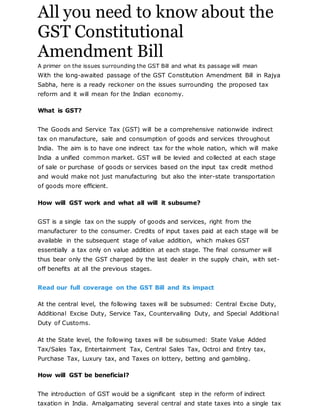The document provides an overview of the Goods and Services Tax (GST) Constitutional Amendment Bill in India. It explains that GST will create a single, unified indirect tax replacing existing central and state taxes. It will function as a dual GST with both central and state components administered jointly through a GST Council. The bill faces opposition from the Congress party over demands like capping the GST rate and changing the Council's composition.







